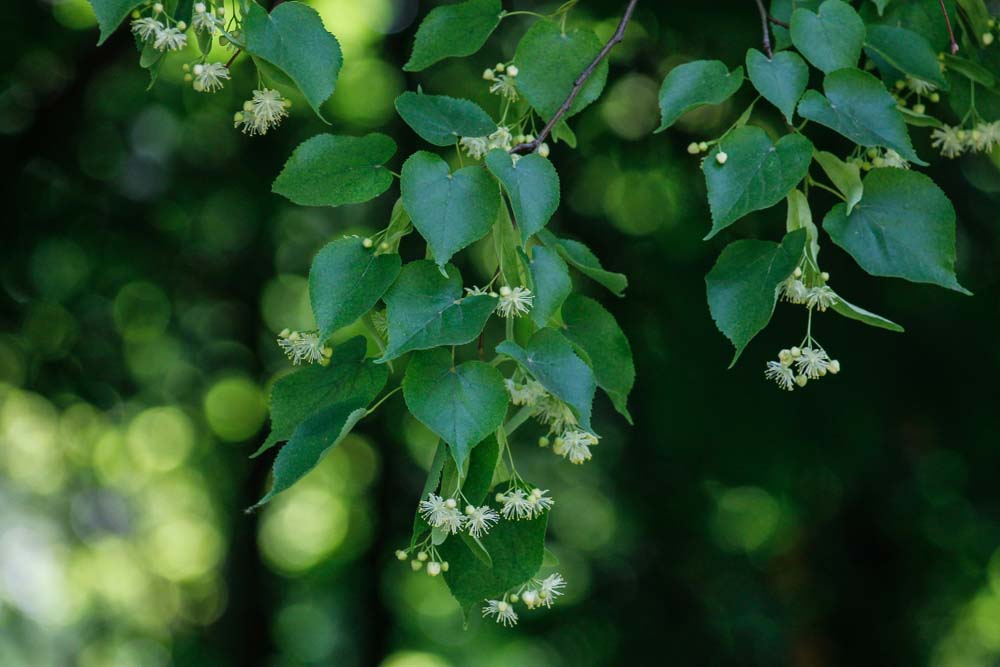Description
Tilia – Lime Tree – Linden – Basswood –
There are 20-45 fast growing, deciduous trees in the Malvaceae family, in this genus. They occur in woodlands in temperate Northern Hemisphere. They are grown for their stately, rounded to conical crown, their foliage and flowers, and in some cases, for their colorful winter shoots. The oblique-cordata shaped leaves, arranged alternately on slender stalks, are toothed or lobed, with tapered to pointed tips and heart shaped bases which briefly turn yellow in fall. On old trees, the smooth silver-gray bark becomes fissures with great age. Bear small, cup shaped, fragrant,, creamy white to yellow flowers in slender, axillary cymes with long stalks are fused with the upper surfaces of large, narrowly elliptic or inversely lance shaped, membranous bracts, usually pale yellow or green, to 6″ long. The flowers are followed by dry, nut like fruits. Grow as a freestanding specimens or street trees. The flowers attract bees, although the nectar of T. tomentosa and T. ‘Petiolaris’ may be toxic,,, especially to bumblebees. They withstand heavy pruning and atmospheric pollution.
Grow in moist but well drained soil in full sun or partial shade. Avoid very conditions and exposure to strong winds. Lindens prefer areas with four distinct seasons and alkaline or neutral soil, but tolerate acidic soil. Several species produce dense thickets of shoots from the bass and from burrs on the trunk, control these by cutting back in early spring and again in late summer.
Prone to anthracnose, butt rot, canker, powdery mildew, bacterial leaf spot, caterpillars (including gypsy moth larvae), lace bugs, aphids, borers, Japanese beetle and mites.
T. cordata ‘Greenspire’ – T. parvifolia ‘Greenspire’ – Littleleaf linden – Small-leafed linden – This long lived, fast grower, dome shape tree found from Europe to Western Russia grows 50′ feet tall and half as wide.It produces rounded to triangular, serrated, and taper to a point lustrous, leathery, dark green leaves, to 3″ long, blue-green and smooth beneath except for tufts of brown hairs in the leaf axils, leaves turn yellow in autumn.Bears cymes of up to 10 pale yellow, hermaphrodite sweetly scented flowers, 3/4″ across, in early and mid summer followed by gray fruit.
zones 3-8





